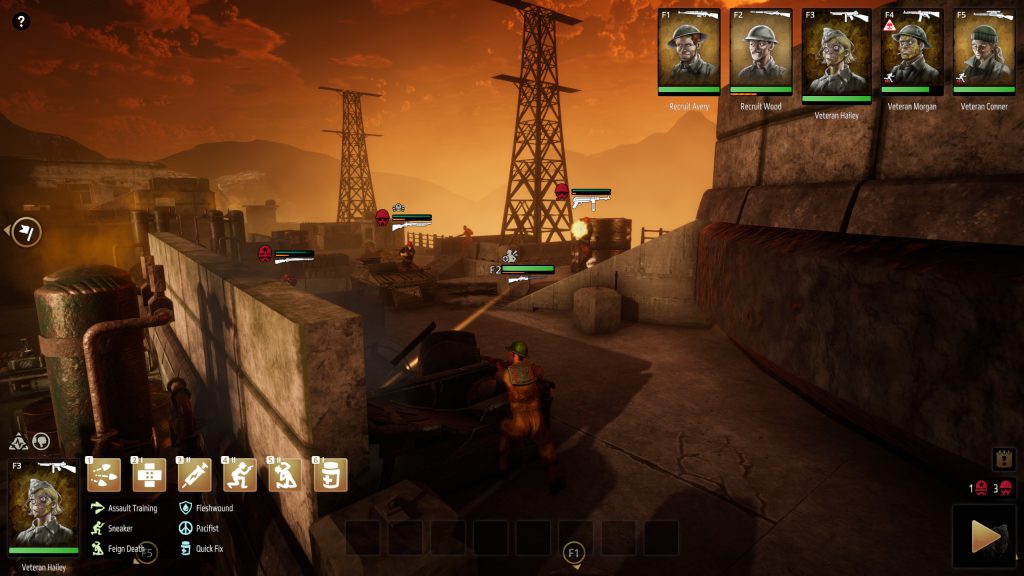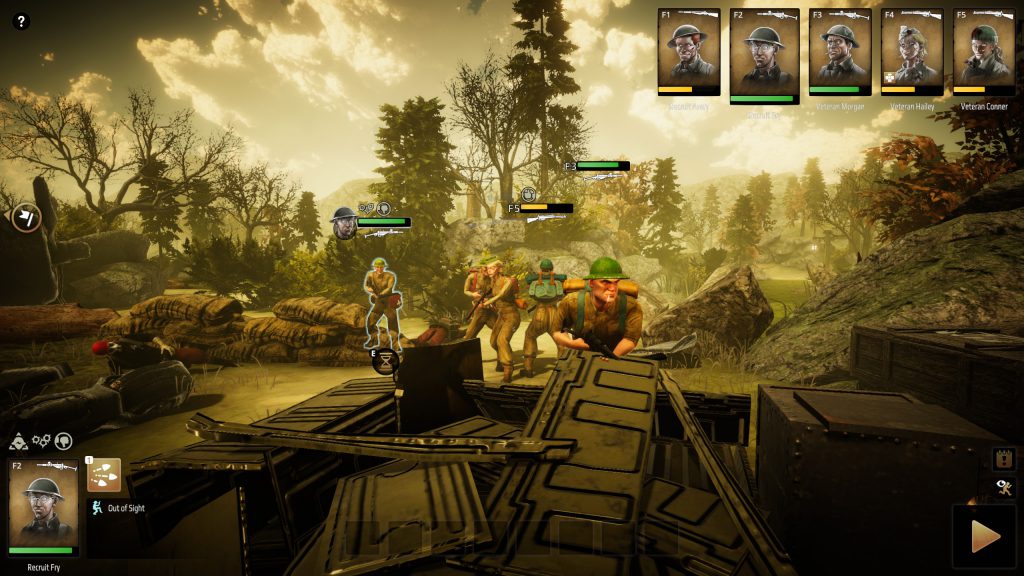Recent years have proven “strategy” to be a broad category made up of various subgenres, each stacked upon and cross-pollinating each other in unpredictable ways. There’s the dogged RTS, the choice-based, political text adventure, the peaceful village planner, and the inescapable and addictive deck builder. Each a different type of strategy game. But, as much as I enjoy each of these, there is yet another subgenre buried in the pile that is perhaps my favorite: the squad-based tactics game.
I’ve been thinking about subgenre and the different forms that strategy games take while replaying 2019’s Broken Lines, a snappy title set in an alternate WWII front and developed by Porta Play in Denmark. We’ve already written about Broken Lines a few times around here, but it continues to stand out to me as a particularly well-executed vision of a game type that seems practically forgotten — and one I’d love to see more often.

See, in popular squad-based tactics games built like XCOM, the combat is structured around turns. Your soldiers and the enemy’s take turns moving between cover and trading fire based on percentage chances of landing a shot. This allows enough time for a plan and nail-biting tension to develop. This turn-based model is familiar enough that recent tactics games have introduced twists to spice the formula up. The excellent Gears Tactics, for example, gave squad members additional actions after enemy executions; Battletech offered a initiative system based on physical weight to determine the order all mechs moved in; and Warhammer 40,000: Mechanicus made action points a physical resource that could be collected within the battle arena. All of these are effective and a lot of fun. But there is another, more dramatic, way to spice up the formula and it’s called “We-go”.

In a “We-go” tactics game turns are removed altogether and the player and enemies move simultaneously. Broken Lines is the most recent iteration of this style and a darn good implementation of it too. Instead of turns, the gameplay in Broken Lines revolves around eight-second windows of action where both your squad members and the enemy move and attack at the same time. When the window of action ends you evaluate how effective the orders you gave were and if your troops had enough time to carry them out. This simultinaity makes combat encounters more free-flowing and forces the player to improvise and react.
Breaking the encounters down into short windows of time where both sides are moving is, of course, just as artificial as turn-based combat. But if you love tactics games it’s a thrill to play a game that reimagines the battlefield as a moving, flowing chain of impulses, reactions and readjustments. In Broken Lines, once a squad member catches initial sight of an enemy the time window automatically pauses allowing for new orders. Orders are given in sequence: take cover behind that, throw a grenade, and then open fire. Your soldiers will open fire and reload their weapons automatically but they don’t always have enough time to carry out your orders within the action window. Part of moving successfully between missions is approximating how long actions will take and readjusting accordingly. Orders can be rescinded with a right click.

Suppressive fire and flanking are particularly important in Broken Lines. Both enemies and player squad members have stress meters that influence their composure under pressure and even affect their receptiveness to orders. If you leave a soldier in a bad spot they might crack and run out of cover where you can no longer give them orders until they recover. While the story of Broken Lines isn’t particularly strong or interesting, the game does a great job of building characters out of your squad members through conversation based choices and chance events that occur between missions. These characteristics influence how resilient they can be under pressure and they even develop relationships where, for example, two characters might dislike each other and both will perform poorly on the battlefield if fighting directly next to each other.
There are some shortcomings. The game lacks advanced destruction physics and the environments are fairly static. This is particularly noticeable in villages with small, simple indoor environments. The vast majority of the game is played out-of-doors and when combat takes place in a house the space feels too small and constrained for the eight-second action window. But don’t let this put you off if you haven’t given Broken Lines a try. It has a fantastic look, a highly-readable (if occasionally cluttered) UI and a generous price point. If you have the itch for an almost-forgotten strategy subgenre that reimagines turn-based tactical combat in a way that feels fresh, and full of possibility, I can’t recommend it enough.
Broken Lines is available on PC, Switch and Mobile.
Comments are closed.